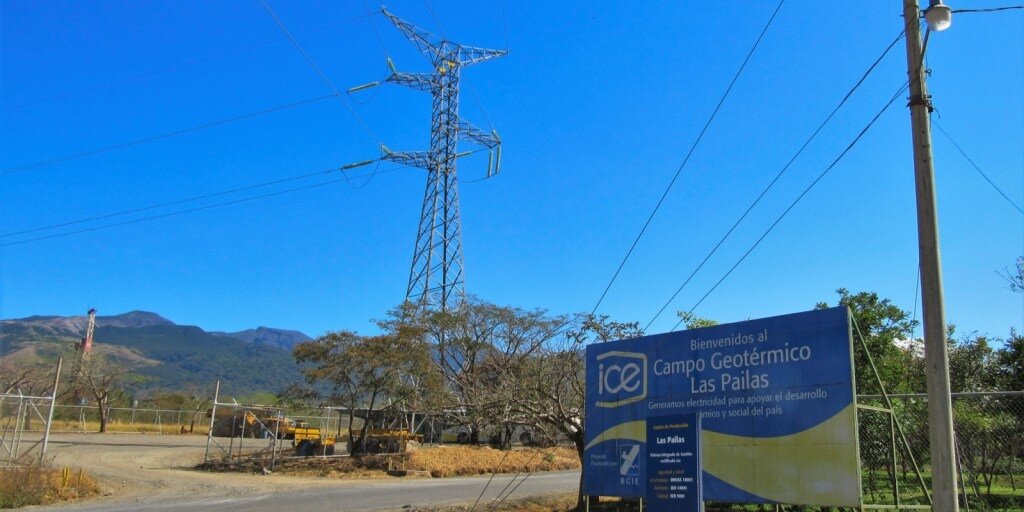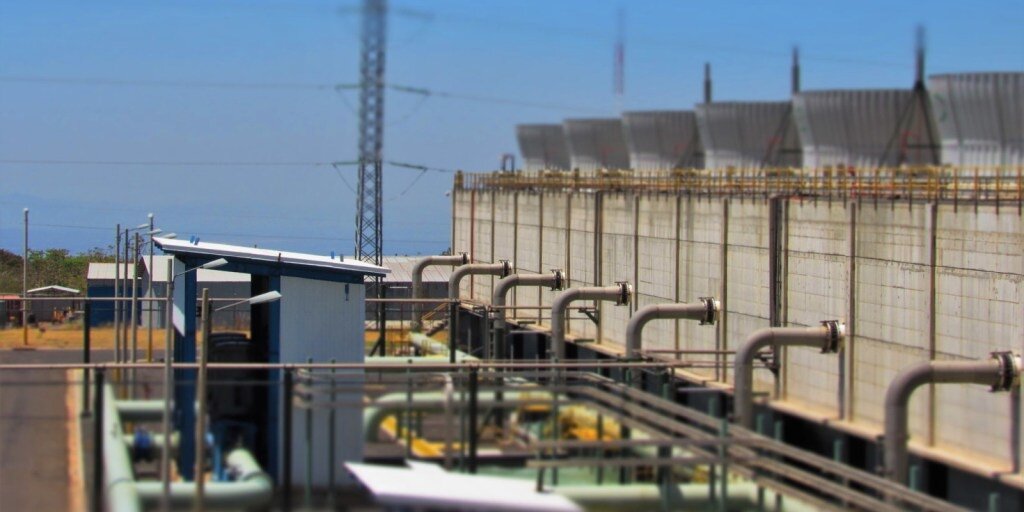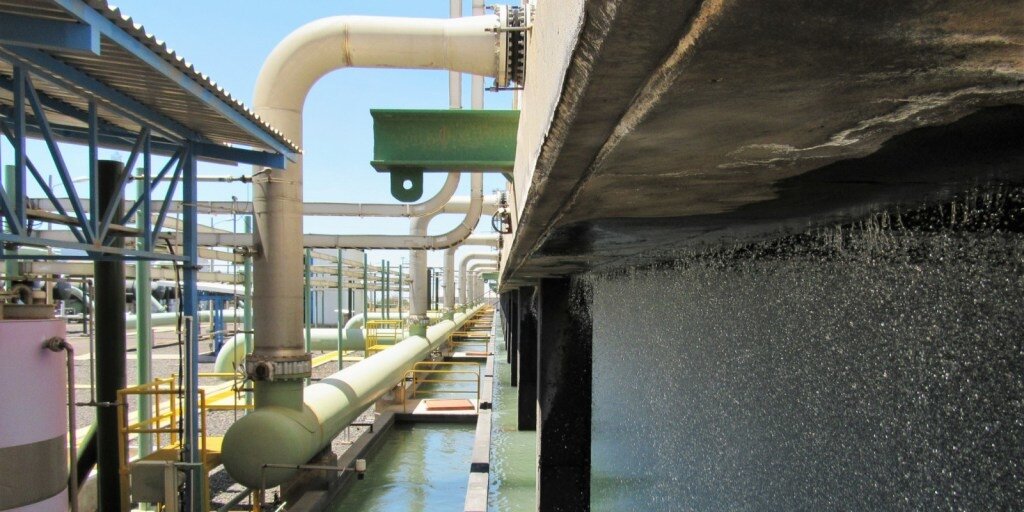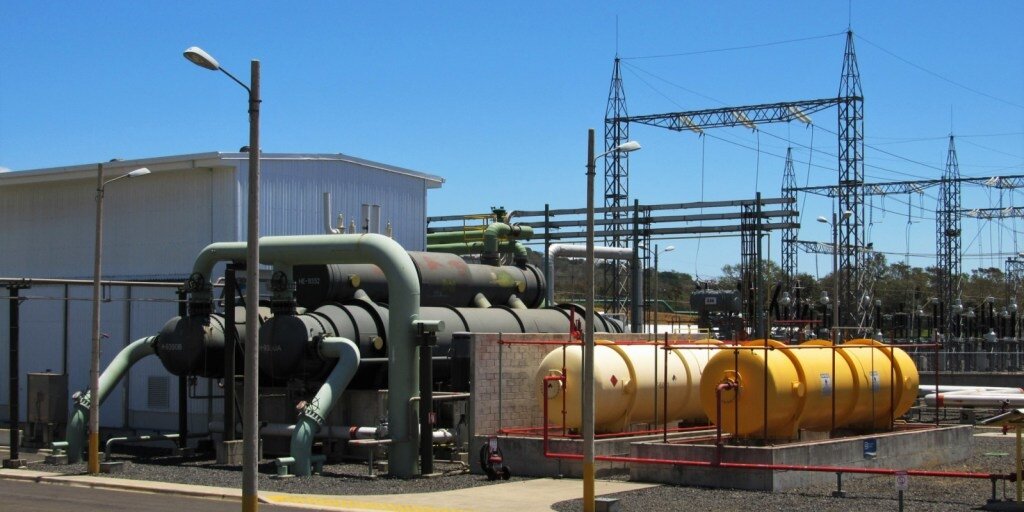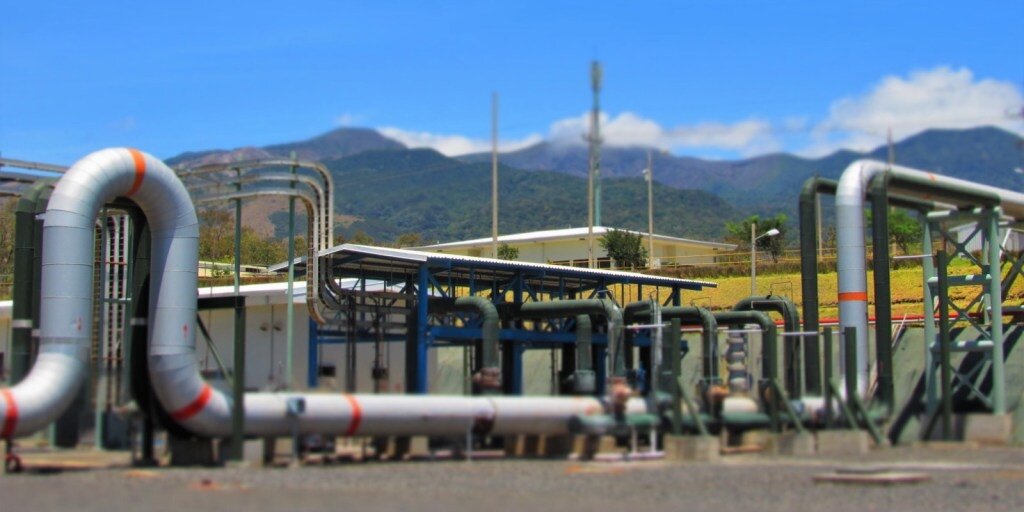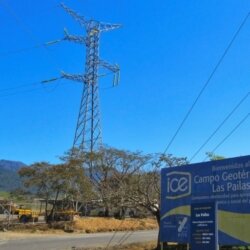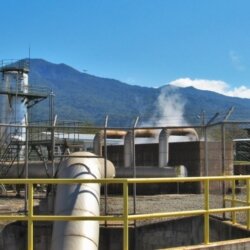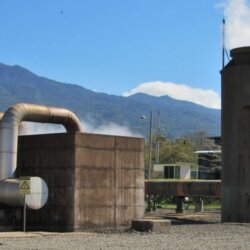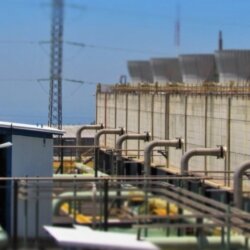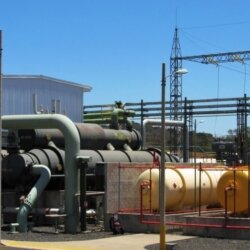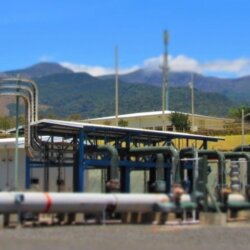Will a geothermal experiment in Costa Rica and Mexico overcome the industry's dark past?
Mexico and Costa Rica are both leading Latin America’s drive to develop geothermal energy, expanding on a growing base of existing projects — and taking two very different paths to clean power.
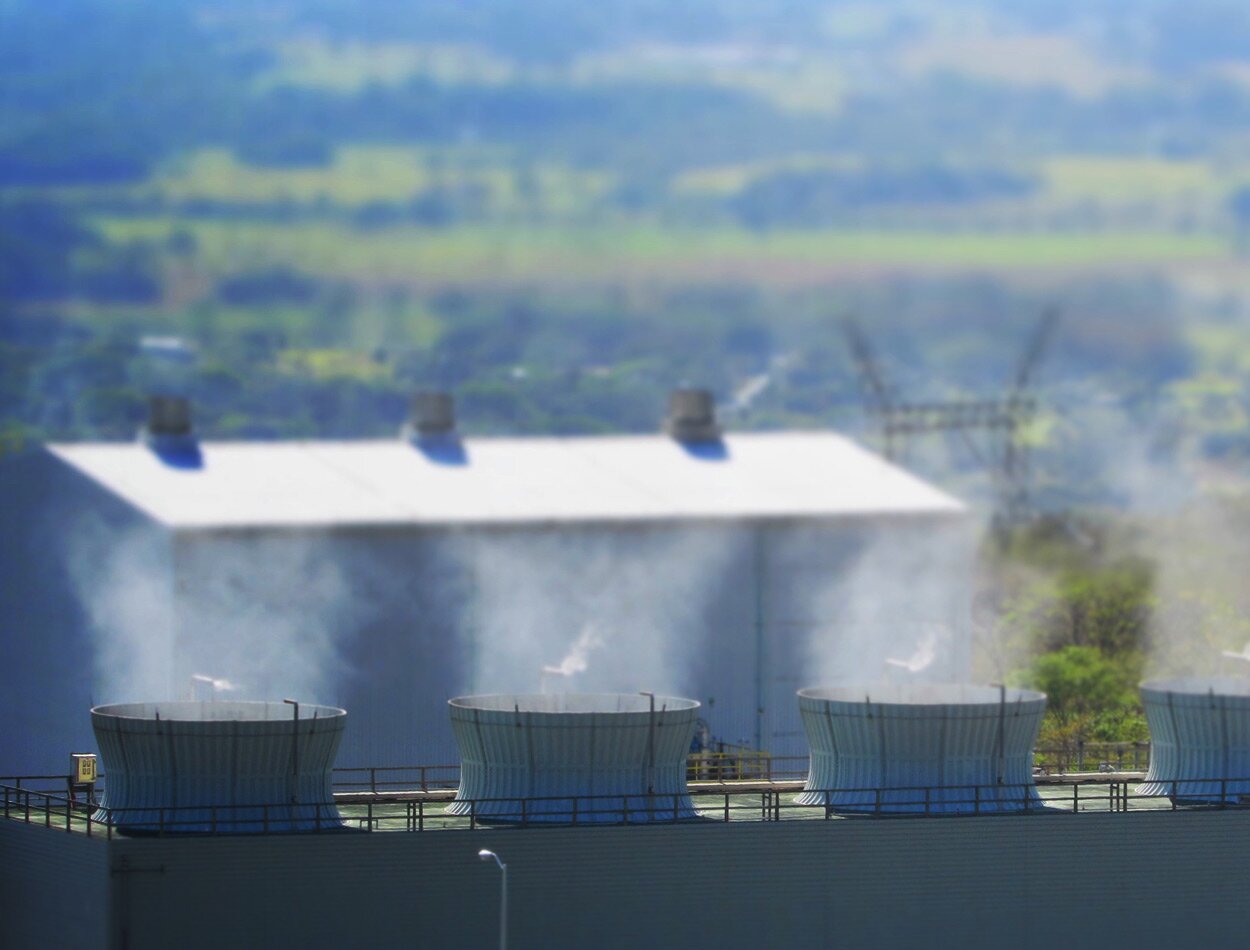
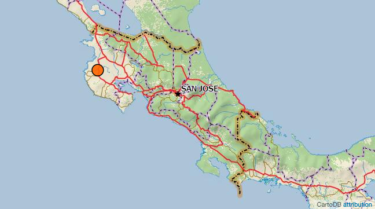
COSTA RICA
- Population: 4.87 million people
- Electrification rate: 99.50%
- Renewable energy consumption: 38.62%
- Access to non-solid fuel: 94.20%
Source: World Bank
MEXICO & COSTA RICA — The heat of the Earth delivers a clean, inexhaustible supply of energy from a string of mountains and active volcanoes that trace the Pacific coastline from Alaska to Chile.
Tapping this energy source could be an efficient and affordable way to power the future of Latin America — a group of countries with common language roots including Mexico in North America, Central America (except Belize) and South America.
For decades, Costa Rica and Mexico, the region’s two geothermal leaders, have embraced the technology, which is, as of this writing, nowhere near its potential. The region uses no more than five per cent of the estimated 300 terawatt-hour (TWh) per year of geothermal, according to reports released by the Inter-American Development Bank (IADB) and the World Bank. (To put that figure in perspective, 300 TWh is more than the yearly electricity consumption of Mexico and Costa Rica combined.)
“In the wake of the oil crisis in the 70s, some countries like Costa Rica chose to turn their efforts into exploiting a local source of energy and decided to enhance geothermal scientific research,” said geologist Guillermo Alvarado Induni, a member of the country’s National Academy of Sciences (ANC). “It took us a long time to develop this know-how from scratch,” said Induni, who has spent the last 30 years working for the Costa Rican Electricity Institute (ICE; which was established in 1949).
"Geothermal is one of the best tools to help Mexico meet its national goals of cleaning the country’s energy."
Michelle Ramírez, Mexico’s Director of Geothermal Energy at the Mexican Ministry of Energy (Sener), points to studies that suggest there’s a potential of one gigawatt of geothermal energy for every active volcano — roughly the same power output of a typical commercial single-unit coal power plant — which is huge considering Mexico has at least 25 volcanoes.
“Geothermal is one of the best tools to help Mexico meet its national goals of cleaning the country’s energy [mix],” said Ramírez, whose government has set a target of producing 35 per cent of its electrical energy from non-fossil fuel sources by 2024. “However, this is still a small industry and requires a lot of investment.”
A climate friendly technology
For now, the region still relies on hydropower for 55 per cent of its total electrical generation, and the burning of fossil fuels for about 40 per cent.
Geothermal currently represents less than one per cent of the energy mix of Latin America. But that could change, given the growing concerns about greenhouse gas (GHG) emissions, which is forcing countries to re-examine how to clean their electrical power systems in the near future.
“It involves no combustion, unlike fossil fuels,” said Luis Carlos Gutiérrez-Negrín, former president of the Mexican Geothermal Association and member of the International Geothermal Association (IGA).
Geothermal is the least CO2-equivalent emitter, with the smallest GHG footprint per kilowatt of any power generation technology, according to the Geothermal Energy Association (GEA). As a matter of comparison, a coal power plant emits 955 grams of carbon dioxide equivalent per unit of electricity (gCO2/kWh). In second place comes oil and natural gas, with 893 and 599 gCO2/kWh respectively. A geothermal plant using a cycle binary technology (mostly used in Latin America) emits only one gCO2/kWh.
“It is renewable because the resource is underneath the surface, the vapour is pumped up to generate electricity and the water is re-injected. If the reservoir is properly managed, it could last over 100 years,” said Gutiérrez-Negrín.
Today, geothermal wells up to five kilometres deep rely on methods similar to drilling oil and gas. Furthermore, it occupies little surface area — ultramodern technology demands a portion of up to one hectare for every four wells.
“Geothermal is a non-stop, 24 hours, 365 days a year natural resource. It is not affected by rainfall shortage or change in the surface temperature,” said Gutiérrez-Negrín who worked with the International Panel for Climate Change (IPCC) to prepare a chapter on Geothermal Energy.
According to this report, experts project that future geothermal deployment could meet more than three per cent of global electricity demand and about five per cent of the world demand for heat by 2050. The “widespread deployment of geothermal energy could play a meaningful role in mitigating climate change,” stressed the authors.
WHY DO YOU CARE ABOUT ENERGY SOLUTIONS?
Tell us why these stories matter and what you’ll do with this information.
Scientists agree that this energy is especially suitable for supplying base-load power as it does not depend on weather conditions in the way that wind and solar power do.
From the Andean mountains to the San Andreas Fault
With fewer than five million inhabitants, Costa Rica aspires to become the first country in the world to achieve carbon neutrality by 2021, when the nation will celebrate its 200th independence anniversary. Such an ambitious target was set in 2007 by the former president and Nobel Peace Prize recipient (1987) Oscar Arias Sánchez.
“Being climate friendly with low carbon emissions certainly helps the country in achieving its carbon neutrality target,” said Emilia María Rodríguez Arias, a Costa Rican lawyer specializing in renewables and a former congresswoman at the National Assembly. “It is indeed undervalued and not sufficiently tapped.”
In 2015, 73 per cent of Costa Rica’s energy generation came from hydropower and 13 per cent from geothermal. Last year, this Central American country went 255 days without burning a drop of fossil fuel and used only renewables for electricity, reaching a 99 per cent clean energy mix. The announcement was made public on Nov. 16, 2015 by the Costa Rican Institute of Electricity.
As the country’s reliance on hydropower becomes more unstable with global warming (due to rainfall scarcity), geothermal has the potential to become an increasingly important energy asset. Costa Rica is considered the seventh largest geothermal producer in the world out of 25 producing countries, according to the International Geothermal Association.
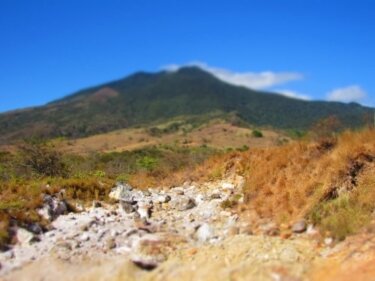
There are over 100 hotspots, volcanoes, cinder cones and hot springs identified in the country, with the greatest potential located within the volcanic active complex of Guanacaste in the northwestern corner of the country, 270 kilometres from the capital of San Jose. The country’s geothermal plan started in 1976, aimed at harnessing the power of its abundant untapped volcanic resources.
ICE manages the country’s two primary geothermal fields: Miravalles, which consists of three flash steam power plants, a backpressure unit and bottoming binary technology; and Las Pailas unit I, which uses mixed cycle binary technology. Both fields together generate nearly 13 per cent of the total energy produced in the national electric system.
Meanwhile, Las Pailas unit II (55 MWe; megawatt electrical) is under development and the Borinquen field (110 MWe) is still in the feasibility phase.
The engineering consultant Paul Moya who witnessed the kickoff of the geothermal exploration in Costa Rica in the late 70s, said there have been some difficulties in developing the best geothermal sites in the country. “That’s because current laws do not allow geothermal exploitation inside national parks and protected areas. This represents an enormous limitation for boosting this sector,” said Moya. (Las Pailas project is precisely located adjacent to the Rincón de la Vieja National Park.)
The communities on the outskirts of these geothermal plants have seen welcome development in the past decades. The village of Guayabo is the nearest community to the Miravalles power plant in the state of Guanacaste, and home to 65-year-old Jose Angel. He was one of the locals hired to assist with research and construction of the plant.
“I saw the very beginning of it,” he said. “Everything around was mud and pond. There were no streets in Guayabo, we could only ride horses to move around. After ten years, tractors came to open paths and pave the way. When geothermal [came], many changes happened. Guayabo developed.”
He remembers the happiness that many felt with the coming of the project. “We wanted the development to reach us. We knew that the future would arrive and that we would have plenty of jobs here. We dreamed of developing the community.”
Geothermal in Latin America
Mexico is the third global leader in geothermal electricity production with 1,017 MW of installed power capacity — 839 MW of which are currently operating. The first plant that came into operation in Latin America was here in Mexico in the early 70s.
![Installed capacity in 2015 worldwide [12.6 GWe] href="https://pangea.stanford.edu/ERE/db/WGC/papers/WGC/2015/01001.pdf">Bertani (2015)](/discourse/wp-content/uploads/2016/11/01001.jpg)
Costa Rica is second in Latin America with 207 MW of installed capacity, according to the World Geothermal Congress 2015.
“When Costa Rica started running its first geothermal field in 1994, we’d had over twenty years of research,” said Mr. Javier Orozco the electric planning and development general director of ICE. “Once you discover such a good quality source of heat, it feels like it is the Mercedes-Benz of the renewables. It doesn’t need wind, sun or rain. It never switches off.”
And finally, Chile is about to launch, in 2017, its first geothermal facility, Cerro Pabellón, located on the Andean plateau, 4,500 metres above sea level. With a total investment amount of US$320 million, it is about to become the pioneer experience in South America with a gross installed capacity of 48 MW.
Once it starts running, transferring heat from deep hot zones to the surface that will turn the turbines and ultimately produce electricity, the Chilean geothermal plant will generate 340 GWh (gigawatt hours) a year, enough to power 154,000 households.
Boosting at a continental scale
Launched at the 2014 UN Climate Change Conference (COP20) in Lima, Peru to accelerate geothermal development in Latin America, the so-called Geothermal Development Facility (GDF) has pledged more than 760 million euros (US$850 million) to boost this type of energy in ten countries of the region. More than 60 million euros (US$68 million) will help reduce financial risk during the early stages of the projects and the rest will go as credit lines to the developers.
The GDF is a multi-donor climate initiative and the first to promote geothermal at a continental scale. It has the financial support from the KfW Development Bank in Germany combining international resources with World Bank, the Inter-American Development Bank (IADB), and five other global agencies and financial institutions. It is expected to facilitate the development of at least seven plants, adding to the region an installed capacity of 350 MW. According to the KfW Development Bank, this initiative should eventually save 50 million metric tonnes of carbon dioxide and provide two million people with clean energy.
Two models: Mexico vs. Costa Rica
Despite Mexico’s geothermal leadership in the region, new uncertainty is coming from recent legal changes started in 2013, when reforms to the energy laws were approved by the Congress. Later in August 2014, 21 new laws were created, part of a new regulatory framework that will transform the Mexican geothermal industry.
Under Enrique Peña Nieto’s administration (in place since 2012), the Mexican Congress approved energy reforms in December 2013, including a Geothermal Energy Act allowing private investors to enter the energy market in the country. It involves a deep transformation of the oil and gas industry and the electric sector that will see the state-run CFE begin to compete with private companies in free power markets.
According to Luis Alfonso Muñozcano Alvarez, the Deputy General Director of Renewable Energy for Mexico’s Ministry of Energy, this new set of laws will bolster and modernize the industry. He said it was necessary to open up to private markets and to stop depending on the nation’s budget to develop the industry. “Relying on the government’s resources hindered thermal exploration and pushed back electrical generation during the 90s and the beginning of the [21st century]. We want now to position the country at the forefront of innovation and technology,” said Muñozcano Alvarez.
Today there are currently four geothermal fields in Mexico that are operated by CFE. According to the Ministry of Energy, so far there have been two concessions for geothermal fields, 15 exploration clearances for up to six years and 11 requests for exploitation concessions of 30 years (extendible for 30 more).
“There are around 30 concessions requests going on for geothermal. As the probability is 50 per cent of success in the perforation and productivity, we are talking about 15 new fields in the next ten years,” said Alvarez.
However, a lot of uncertainty has been sparked by the regulatory changes, including how licensing for geothermal projects will be conducted in the future. “The law has not been widely discussed by society,” said Beatriz Olivera, who teaches at the National Autonomous University of Mexico (UNAM). “It lacked a wider public debate on this subject and a consultation if society did really agree with this change. It seems it has been a top-down imposition.”
As the Geothermal Act is the first one the country has had since the beginning of its explorations some decades ago, Olivera wonders if there is still a long way to go in learning how geothermal should interplay with environmental issues, human rights and the democratization of energy.

“There is yet a need to understand much more about environmental risks that might be caused by geothermal,” warned Olivera. “I am not sure if the Mexican government and the judiciary will be able to regulate, enforce and punish private companies in the event of disasters and human rights violations.”
Meanwhile, the Costa Rican geothermal experience is much different: existing geothermal assets are run by state-owned utilities and so far there is no movement to change that for the upcoming years.
The national legislation determines that only ICE can exploit geothermal. Natural resources are in the hands of the state and, unlike the global trend, this small Central American nation still wishes to keep the monopoly and a centralized electrical plan.
“There have been some partial openings for the private sector like outsourcing for building a power plant, but ICE remains the only energy buyer and the distributor,” stressed Orozco, the electric planning and development general director of ICE.
“Within all global trends toward openness, Costa Rican society and government decided that we’d better centralize planning and keep it as an important role of State institutions,” said Orozco.
